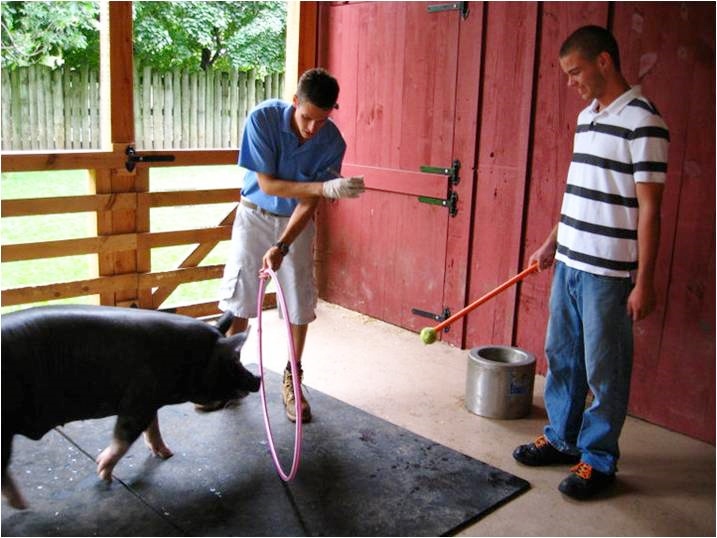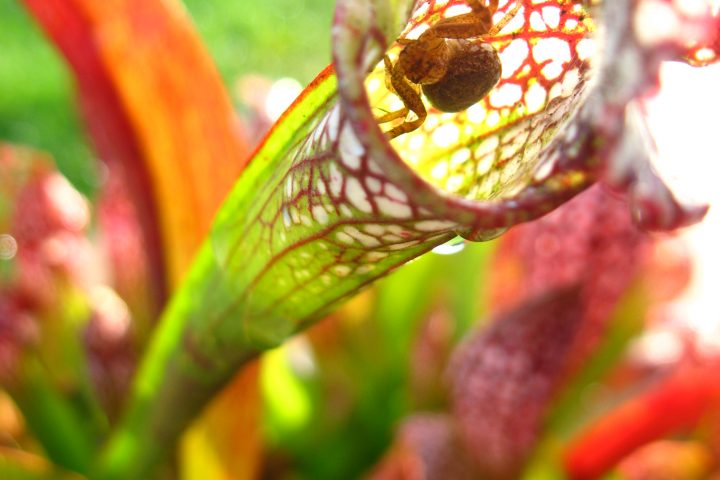Learning how to target train your pet might be the most beneficial behavior you could train. When an animal targets, you are asking them to aim a body part towards a specific object. Once trained, this behavior has endless possibilities.
A hamster shows aggressive behavior towards hands whenever they enter the cage to change food and water bowls. The hamster could be trained to target to the other side of the cage so the caregiver could safely remove the dishes. Eventually the hamster will go on the other side whenever someone reaches their hand in the cage.

A dog bolts to the door when people ring the door bell. If the dog is trained to target to a dog bed or a piece of cardboard, the family wouldn’t have to worry about the dog running out the door. Targeting to the dog bed or cardboard must be more rewarding than lunging out the door, which can be accomplished with the use of treats and praises.
A skittish animal, like a companion cat or bird, could be trained to approach visitors by moving towards a target that the guests are holding. The target is familiar and positive to the animal and reduces the anxiety associated with new people. An added benefit of the target is that it can be on a long stick, so when the animal targets they are not directly approaching the new person, which is usually the most intimidating part. Another benefit is if the animal is truly focused, they are paying attention to the target and not the person holding it. This makes it easy for you to pass off the target to many different people and still get the same response from your pet.
A bird flying through a hoop, a sea lion jumping out of the water to hit a high ball and a rhinoceros moving between two pens are also examples of target training. These behaviors would be very hard to accomplish through coercion. Pushing a 5,500-pound rhino to an adjacent pen would be impossible. Knowing how to target train your pet makes this behavior achievable.
Many targets for animal training look like a ball at the end of a stick. For farm animals (mule, cow, sheep, pigs and dogs) I have used a tennis ball at the end of a ½-inch wide, one-foot long PVC pipe. I cut an X into the tennis ball and it fit so tightly on the pipe I didn’t need to use adhesive. For larger animals, like a sea lion or rhino, boat buoys at the end of wider PVC are generally used. For small pets, wiffle balls attached to pencils are cheap and easy to make.
To start training, present your target to the animal. Curious animals will come over and investigate. If you want to have them target their nose to the ball give them a treat once they bump into it. The clever thing about training is that the animal doesn’t need to know that they are being trained. This applies to humans as well. After the animal eats their treat, wait until their nose bumps into the target again and then reward. Repeat this a few times. Then try to move the target a few inches. Then try a few feet. The animal will quickly start following the ball, so they can get a reward. After about seven repetitions my cat was chasing the target and me around the house.
Instead of a target stick, described above, you could use a flashlight. Every time the animal touches the light with their paw, give them a treat. A list of potential targets is endless. Common targets could be a closed hand, ball, stick, light or piece of carpet. The body part the animal aims to the target is not specified. You can choose any body part — nose, paw, back or tail.
Using target training, I have trained 400-pound pigs to run through a hula-hoop, farm animals to give kisses, spin to the right, turn to the left, jump over hurdles, parrots to voluntarily offer their nails for trimming and dogs (and a lesser extent cats) to go through agility courses. Now that you know how to target train your pet what behaviors are you going to accomplish with target training?



